Akihabara Shopping Tips for Gamers
Five tips to help you navigate Tokyo’s gaming paradise
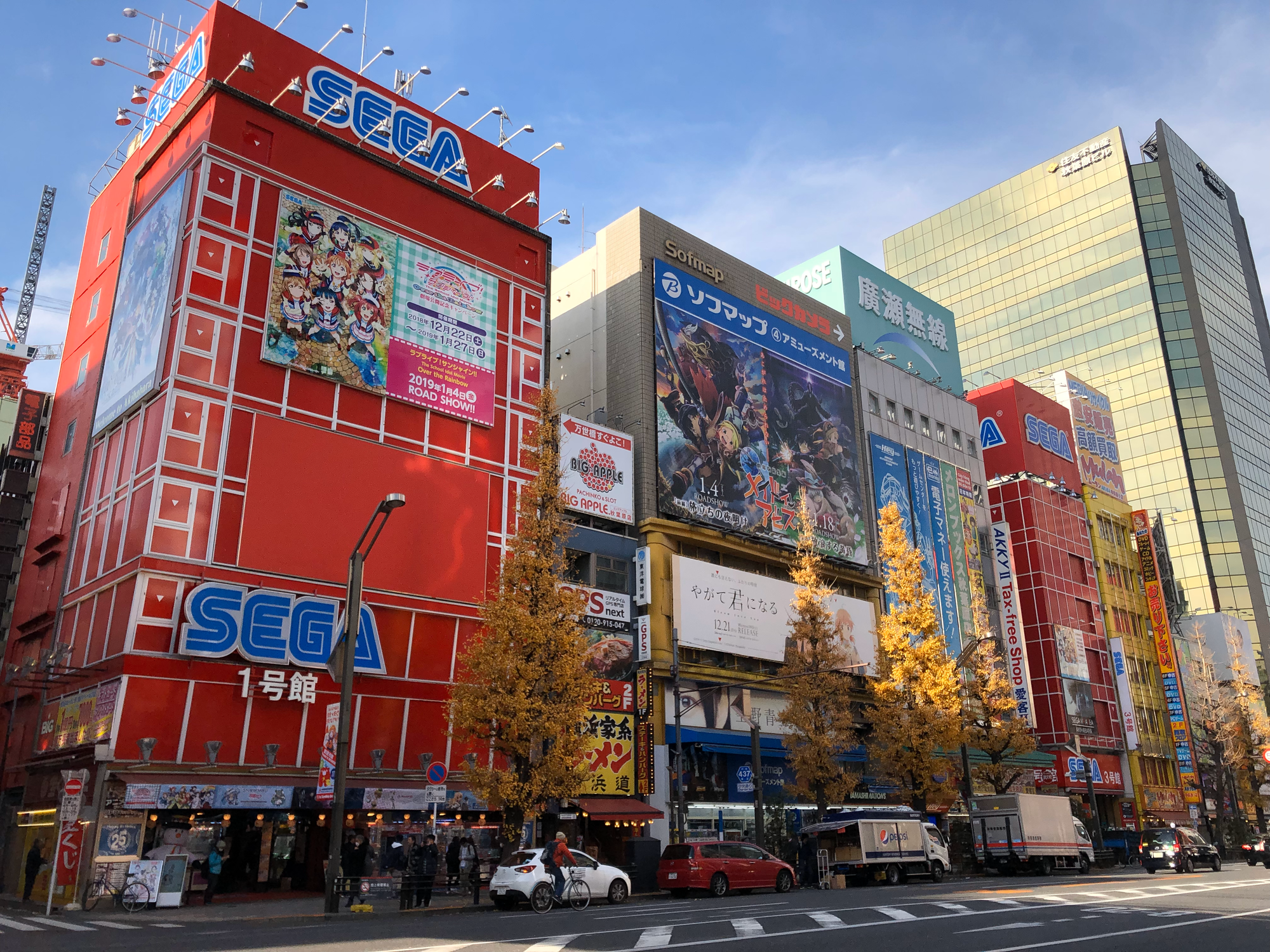
Japan is an obvious destination for gamers the world over. Whether you’re on a solemn pilgrimage, exploring the country’s many arcades and VR centres, or even it’s numerous video game-themed cafés, there are no shortage of stops you’ll want to make during your visit. But there’s one location that is perhaps the mother of them all: Akihabara, Tokyo. Also known as Akiba, the district is famous around the world for being something of a video game, anime, and manga mecca. The area just outside Akihabara Station is known as Akihabara Denki Gai, or, Akihabara Electric Town.
If you’re visiting Akihabara for the first time — as I was just a couple of weeks ago — it can definitely be overwhelming. Electric Town is a large area, with a seemingly limitless number of stores to explore. It’s even more overwhelming once you leave the main road for the web of backstreets and alleyways, which are bursting at the seams with things to see and do.
Now that I’ve done some shopping in Akihabara — and survived — I thought it’d be a good idea to share some learnings from the experience. But before I dive in, I need to acknowledge mbd, who supplied me with a fantastic list of stores to check out. Although I didn’t get around to all of them, I did manage to see most of them. The good news is that no matter what you’re into as far as video games go, there’s likely to be something to suit your taste in Akihabara.
And now, in no particular order, here are my key tips for Akihabara newcomers.
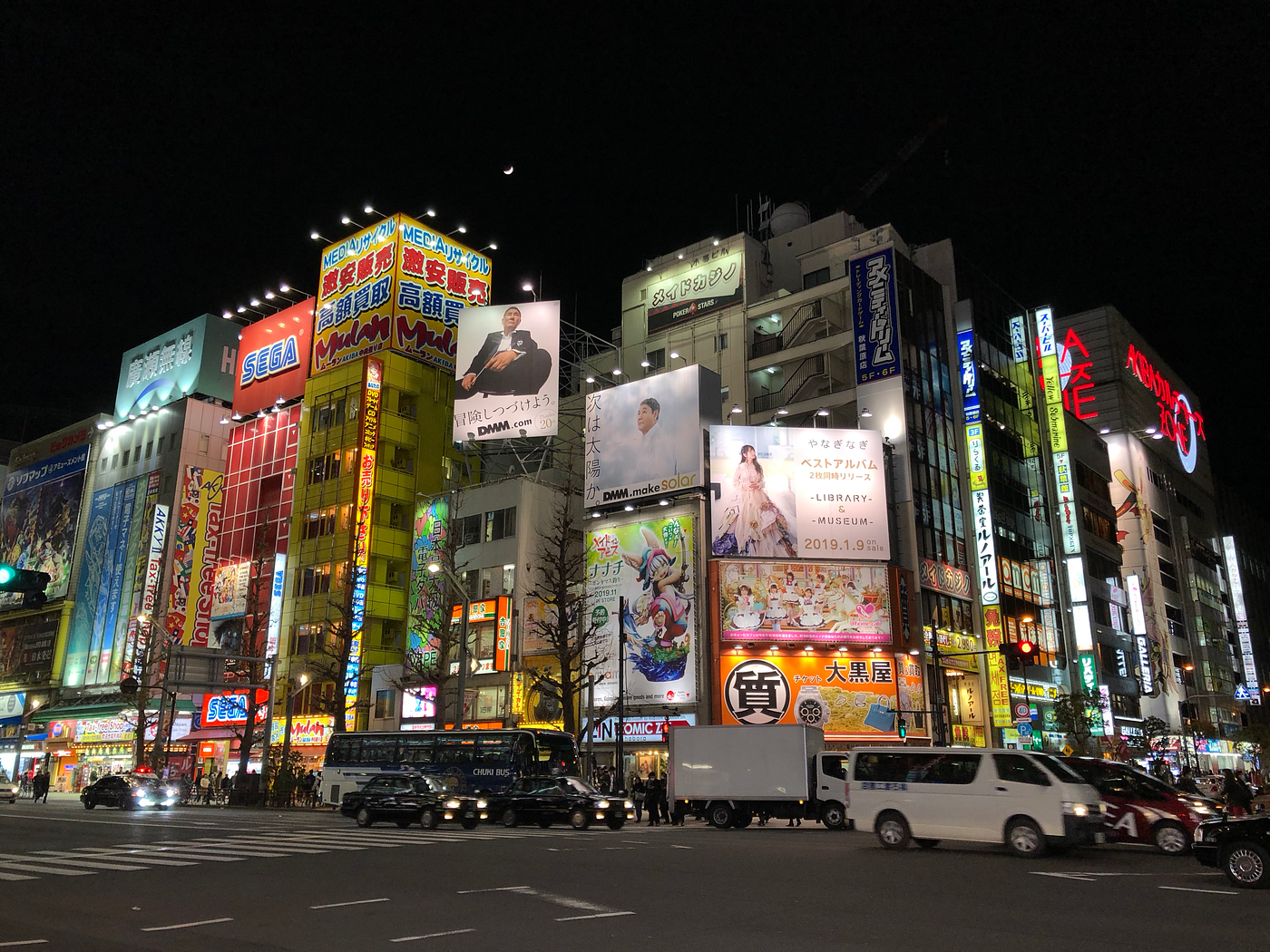
1. Be patient; shop around
My first tip is probably also the most obvious one. I went to Akihabara having heard all the stories, and armed with a list of stores to look at. I also went with a rough budget in mind, and only a few specific things I actually wanted to buy. For the most part, I was happy to browse and see what took my fancy.
But one lesson I learned very quickly is that prices can very a lot within a fairly small area. If, after existing Akihabara Station, you start by exploring the main roads, you’ll certainly find some great places — but many of the more obvious stores also tend to have the highest prices.
To give you an example: I was looking for a Persona 5 figurine. I found some great ones on the main road, and I was tempted to snap one up right away — but I’m glad I waited. The very same figurines were available in several stores for significantly lower prices.
Depending on how much time you have available, I recommend taking note of the item you want to buy (I just took photos and recorded the prices), and then shop around a little for those items. You may find that you save some serious ¥.
2. Retro console condition and pricing
Many gamers shop in Akihabara for retro games, including consoles. One item I’d always sought to add to my collection at home is a Nintendo Famicom (the Japanese version of the Nintendo Entertainment System). One thing you’ll notice straight away in most of the Akihabara gaming stores is that retro consoles are everywhere.
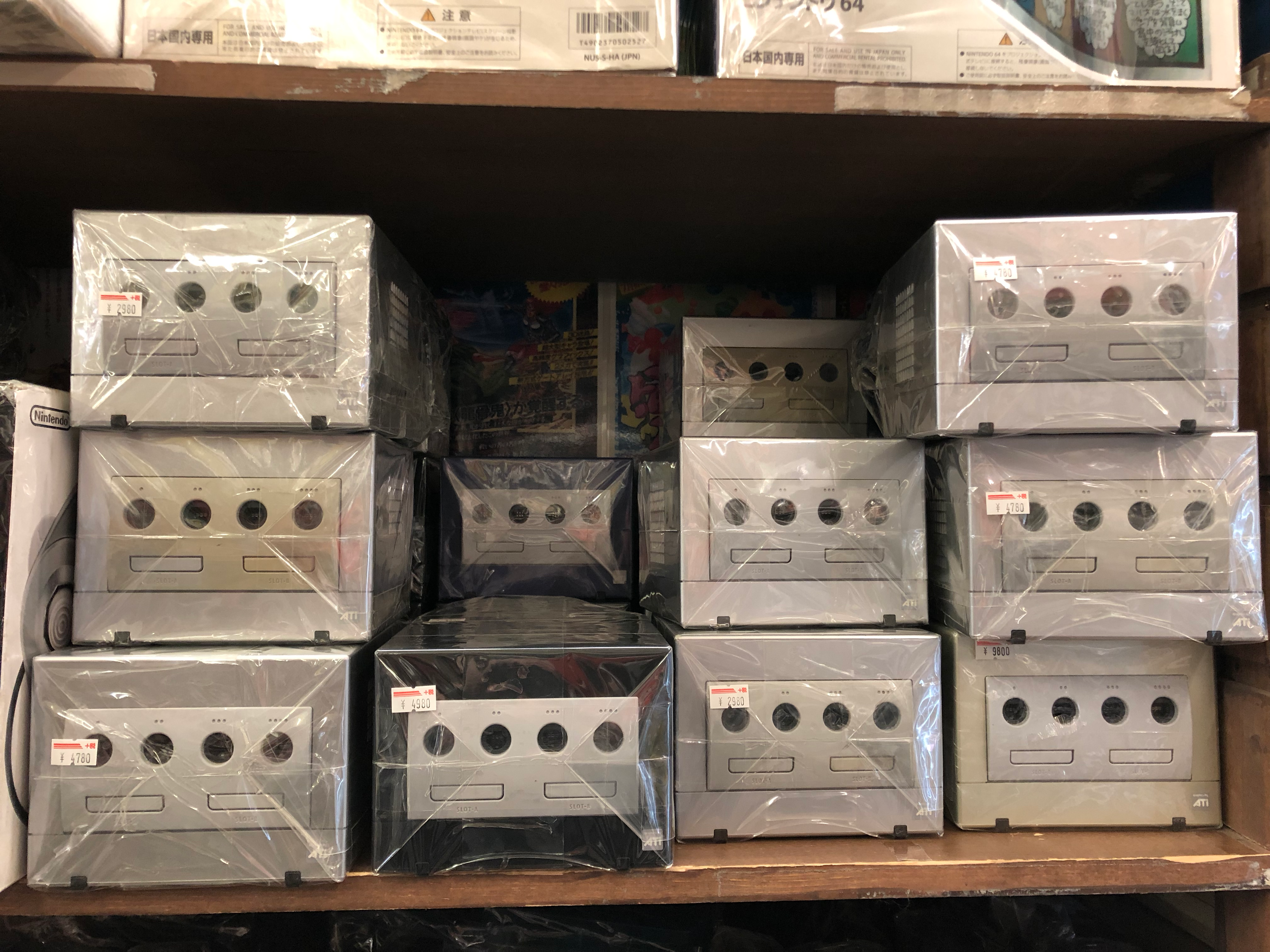

Not only is pretty much every major game console represented, but you’ll find many lesser-known models too — including, of course, numerous consoles that were never sold outside Japan. In many cases, you’ll see bare consoles wrapped up in plastic (see the GameCubes above), and in other cases you’ll actually find complete-in-box consoles in their original packaging (see the Nintendo 64s above).
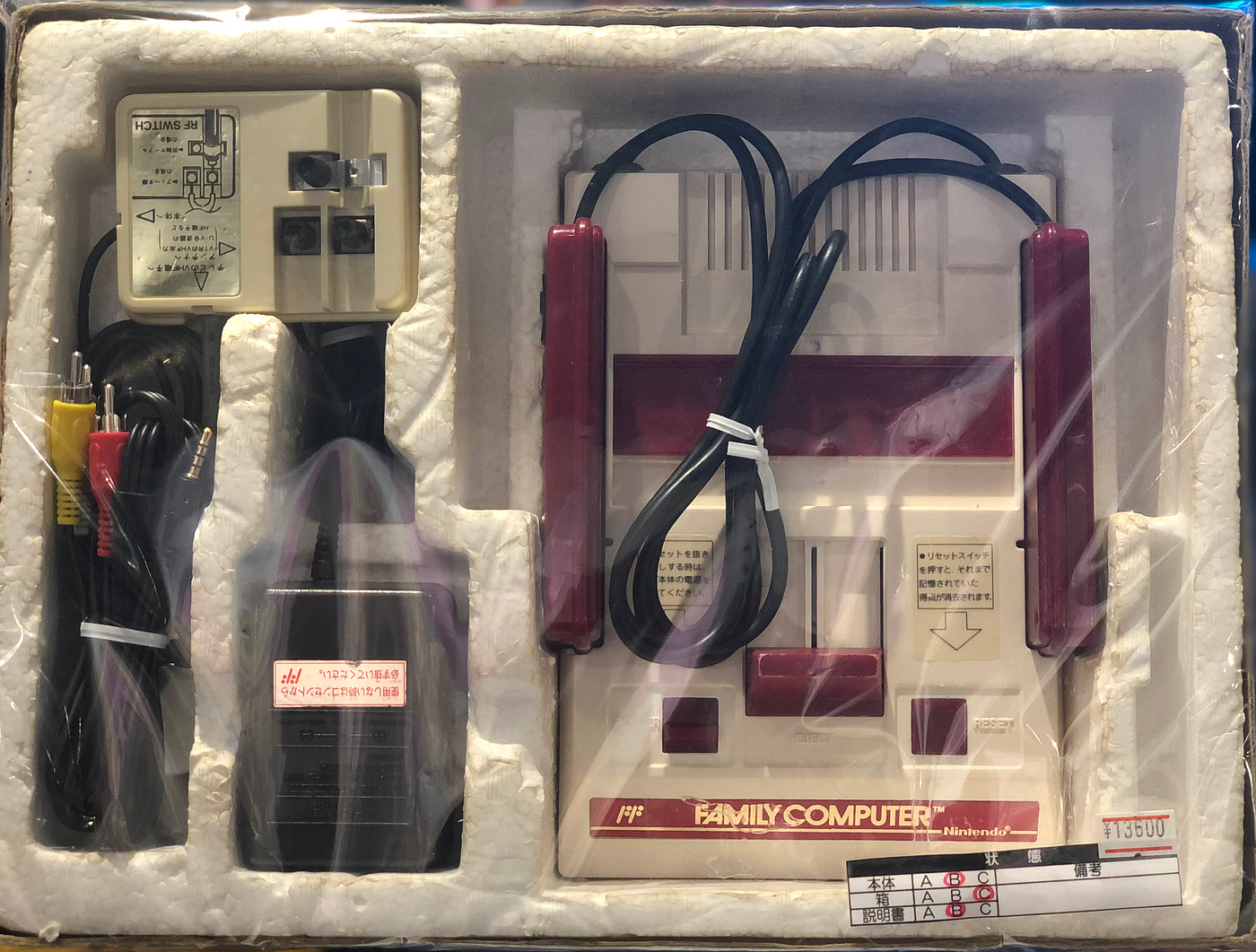
On the one hand, it’s pretty awesome to come across retro game consoles that are still in their original packaging, especially where that packaging has been so lovingly cared for and is in such fantastic condition. On the other hand, though, you will notice that prices can very dramatically based on subtle differences in the item — this can include everything from the quality of the console itself (for example, a Famicom with lots of yellowing on the plastic will typically sell for less than a more pristine version), as well as what’s actually included (for example, is the console in its original box? Does it come with original manuals? All the cables?)
My advice here — if you’re looking to buy a retro console — is to be very discerning when it comes to quality, inclusions, and pricing. One thing that concerned me about the complete-in-box models (like the N64s above) is that although the packaging looked great, I had no idea about the quality of what was inside. Perhaps I could have asked the stores to open them up for me, but I didn’t end up doing that, and I have no idea if they’d have obliged or not (especially considering they’ve mostly been re-sealed with plastic coverings).
However, you’ll find that some stores actually do something rather clever — they take the top half of the original box off and pop it underneath. They then seal the whole thing in plastic. This way, you can see exactly what items are included, and you can get a better sense of the overall condition of what you’re buying. The Famicom pictured above is the one I purchased; it was one of the better-condition models I found.
Of course, there are other considerations if you’re actually planning to play these consoles at home — including what kind of TV you’re connecting to, what cables you have/need, and whether or not you need a power converter. Those considerations alone are quite significant, and you’ll find numerous great resources to help you with such things (especially on YouTube).
3. Pre-painted versus DIY figures
This is a slightly weird tip, and it might seem obvious to some — but I think it depends, at least in part, which country you come from.
Aside from video games, you can find an enormous variety of figurines in Akihabara — many of them are extraordinary, too. Not only will you stumble upon figurines of fan-favourite gaming characters (everything from Final Fantasy VII’s Cloud to Metal Gear Solid’s Snake), you will also encounter a massive number of anime-related figurines and even some true oddities (for example, I came across large re-creations of Bloodborne weapons — whether or not you can actually get those through customs in your home country is another question, though).
As it happens, I was looking for a specific figurine that actually wasn’t terribly easy to find in Akihabara. Although figurines are very popular in Japan, many of them are actually sold in the form of DIY kits, which require you to physically construct the model and paint it yourself. In some cases, these kits are incredibly obvious — many of them even contain a number on the box, indicating the level of complexity involved in assembling them — but there are a surprising number of cases where you’ll pick up a box that looks like it contains a pre-painted figurine when it’s actually a DIY kit.
Pay close attention to this and, if in doubt, check the item with an employee in the store. A friend of mine hastily picked up an Evanglion figurine only to find when he returned home that it was actually a kit — sadly, he didn’t have the right tools to assemble it, and it broke. It also didn’t help that the assembly instructions were entirely in Japanese.
Of course, you might want to purchase a DIY model to assemble and paint yourself — that’s perfectly fine, and you’ll come across many of these. If you are interested in models like this, especially Gundam ones, I actually recommend checking out Yodobashi Akiba right near Akihabara Station. It contains an entire “hobby floor” full of models to build, as well as a large section where you can buy all the tools you’ll need for a successful project.
4. Special edition/box set heaven
I haven’t mentioned buying actual games simply because I don’t think there’s much unique advice I can give here — there exists an endless supply of games in Akihabara, both old and new. And like consoles, you will often see retro games either complete-in-box or as stand-alone cartridges. Buying Japanese games is obviously a fiddly business depending on the platform you’re buying for, and whether or not the game contains a lot of Japanese text. I assume that if you’re buying games in Japan, you probably know what you’re looking for.
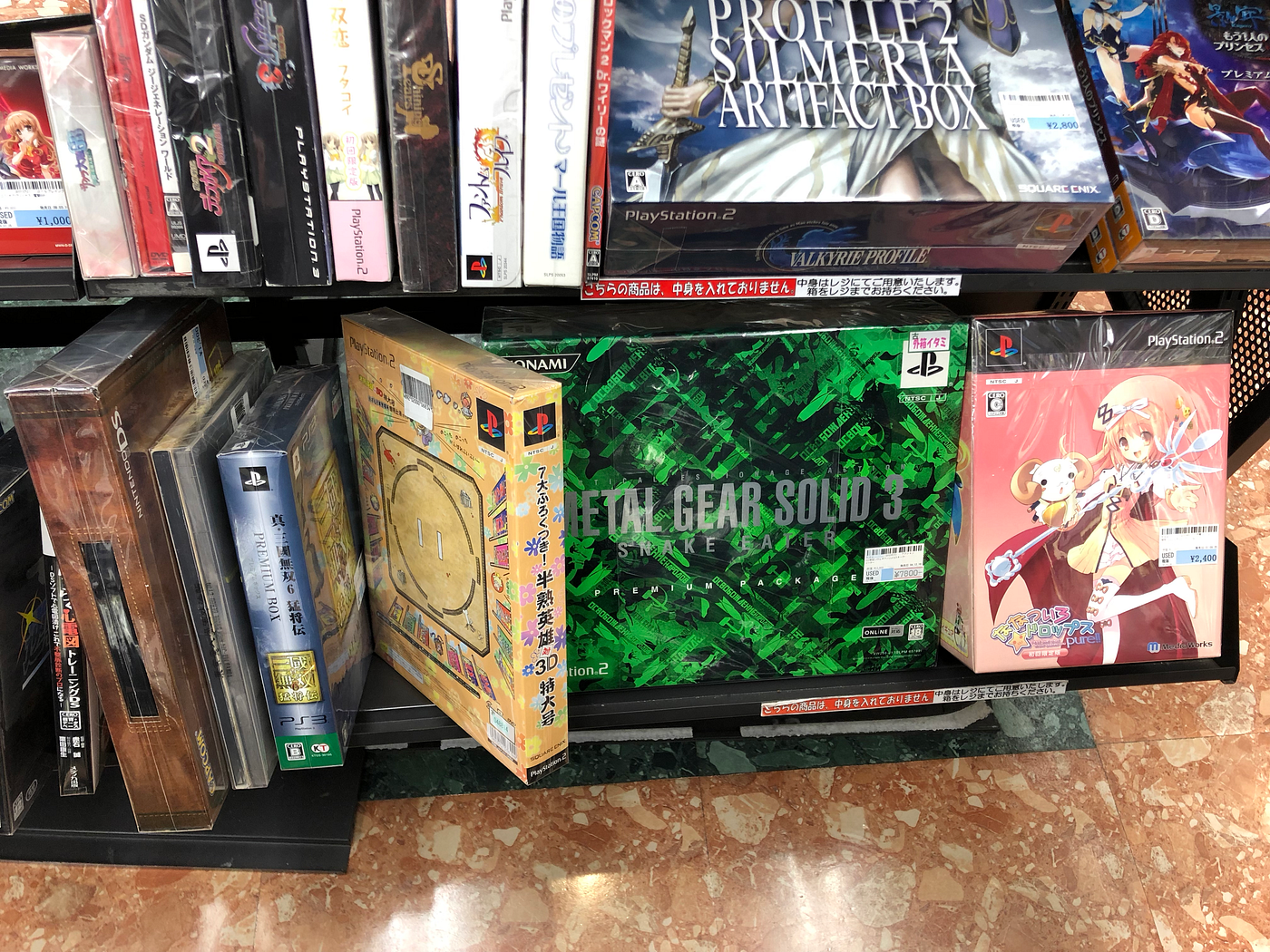
The only thing I’d add here — something I wasn’t really expecting, or didn’t think about beforehand — is that there are a ton of special editions and box-sets in Japan. The photo above is only the tiniest sampling; some stores didn’t have any box sets at all, while others were piled up to the ceiling with them.
The nice thing about these sets is that a) they’re usually in brilliant condition and b) many of these varieties were never released outside Japan. If you’re a collector for a certain franchise, it might even make sense to keep your own playable version of the game but still purchase a Japanese special edition/box set as a collector’s piece. Many special editions come with unique and interesting artefacts that are sometimes sold online as stand-alone items (for example, they might have large fold out maps, or figurines, or other goodies).
5. Special edition consoles
This tip kind of relates to the previous one, but again, it’s not something I’d personally considered much before arriving in Akihabara. Yes, you can buy both retro and new consoles everywhere, but you can also pick up some incredibly rare special edition consoles.
Two examples come to mind immediately, and if I’d had the luggage space, I would have been tempted to add at least one of them to my collection. In the first case, I came across numerous stores that had special edition Dreamcast consoles. There were actually numerous special edition Dreamcast, most of which were released exclusively in Japan (the translucent blue Hello Kitty model and the translucent red Biohazard: Code Veronica model were both very tempting).
Handheld consoles are also plentiful in Akihabara, including many special edition and ultra-rare releases (this includes everything from versions of the Nintendo DS that were offered exclusively to subscribers of Club Nintendo in Japan, to complete-in-box — in some cases, entirely unopened — Game & Watch machines). The big advantage with handheld gaming is that, in many cases, these devices are region-free — so you can buy Japanese hardware and still play your local games if you want to. Of course, you can expect to pay higher prices for complete-in-box items that are in mint condition — and you’ll pay a premium for items that are still factory sealed (these aren’t as common, but they do exist).
I hope you enjoyed these tips — these ones aren’t necessarily the most original or relevant, but they are all considerations that I noted during my experience. I suppose that the biggest piece of advice I can offer, though, is to take your time if you can spare it. Akihabara is a huge area, and it’s easy to get lost in a sea of neon lights and tempting goodies lining store shelves — definitely take the time to browse, and if possible, go in with at least a couple of items in mind before you even start. If nothing else, that might help to keep your budget in check.
